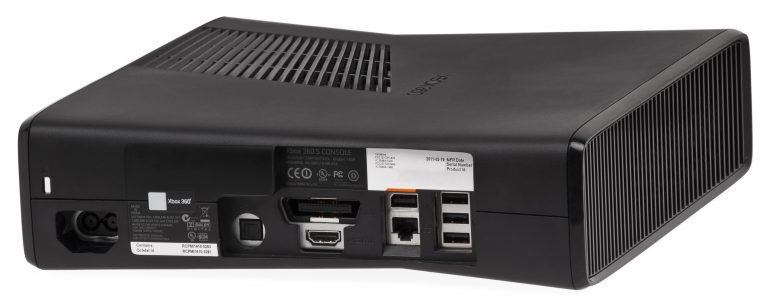How to Test Your Speaker Wiring to Check If It’s Faulty

There’s nothing worse than sitting down prepared to listen to your favorite music or binge-watch the latest show and hearing nothing coming from your speakers. It can be frustrating. Thankfully, there are some easy steps you can take to test your speaker wiring for faults.
Over time, speaker wires easily become frayed or even broken from being moved around. This breakdown can lead to a distorted sound or even worse, no sound at all. Even after inspecting the wire carefully, it is often difficult to spot the problem. How will you confirm that the wire is damaged if you don’t see it?
Possible Problems with Your Speakers & Wiring
If you are facing sound issues, there could be several possible issues.
Connections – Wires and connectors easily become loose or even disconnected. Inspect the entire area to see if something just needs to be connected properly. Aside from that, there could be issues with the speaker wires themselves. We will talk about how to test that in just one minute.
Grounding – The ground wire might be loose or disconnected. Try relocating the wire to a stable location or securing it firmly. When the ground wire is to blame, you’ll hear a buzzing or whining sound in your audio system.
Amplifiers – Check the settings for your amp. You’ll also want to secure the connections.
Speakers – A blown speaker makes a distorted sound that most people have heard. This problem is not repairable, and you’ll have to replace the speaker. You might even be able to notice visible damage to the speaker.
Test Your Speaker Wiring with a Multimeter
No products found. No products found.
You can troubleshoot the speaker wire with your multimeter or voltmeter. Here’s how!
1. Turn off All the Equipment
This is an important safety step whenever you work with electronics. Otherwise, you can cause a short or other damage to the components themselves. You don’t want to have to figure out multiple problems from a simple wire issue just because you chose not to turn off the power.
2. Remove all the Speaker Wires
To check the wires, they will need to be removed from the box. This is important for both the positive and negative wires. Just press the two clips that hold the wire in or twist the connectors counterclockwise if that is your setup instead.
Your next step is to remove the wires from the stereo receiver. Do not attempt to remove the wire while the lock mechanism is still engaged. It is possible you’ll have to press clips together, use an electric screwdriver (like this one) or twist the lock to remove the wires.
3. Connect Wires Together
Once the wiring is removed from the stereo and the speaker, you are ready to create a circuit. Twist two separate cables together at one end. Now you have a closed circuit which is perfect for testing continuity.
Don’t twist them together tightly. You could end up having trouble separating them later which can lead to damage.
4. Setup your Multimeter
Turn on the multimeter and adjust the dial to the Ohms selection. You use this option to test resistance, and it is what we’ll use on the speaker wires. Before testing the speakers, make sure the multimeter is working properly. Simply touch the black and red probes to one another.
The reading should be 0 Ohms or no resistance. This indicates everything is working as it should. If you receive any other reading, there could be an issue with your multimeter. It might be time to invest in a new multimeter before proceeding forward.
5. Test Your Wire
Touch the two probes of the multimeter to the bare speaker wires of the circuit. Make sure you do this on the two wires that you didn’t twist together. If your multimeter shows infinite resistance, then there is a break or cut somewhere along the wire. This indicates that it is time to replace your wire.
If the cable displays a small amount of resistance, everything is working fine inside the speaker wire, and you have other sound issues.
For a quick illustration on testing a speaker wire with a multimeter, check out this video –
Test Your Speaker Wiring with a Battery
No products found. No products found.
If you find that the wiring works well, you could have an issue with the speaker itself. An easy test can be performed with a 9-volt battery.
-
Connect your 9-volt battery to the leads of your speaker. The positive gets connected to the positive of the battery end while the negative should attach to the negative end. If the speaker begins to pulse, then the wire is working properly.
-
If a pulse is generated in the speaker, then the speaker is still functioning properly.
-
You can do this same process to the tweeter speaker too.
Do not keep the 9-volt battery connected to your speaker for any extended amount of time. This could lead to damage to the speaker.
Here’s a video that illustrates how to do this with a car stereo speaker –
Safety Rules Regarding Your Multimeter
No products found. No products found.
While a multimeter is a fabulous tool for diagnosing various electronic components, there are some safety tips you’ll want to follow.
Physical Inspection
Always perform a physical inspection of your multimeter before usage. If you notice any signs of damage, you need to assume it isn’t working properly. To help keep the multimeter in good shape, always store your probes and unit in a protective case while not in use.
Also, you need to test the probes. There should be no physical damage, and all the connections should be secure. You can run your fingers across the probes to feel for damaged insulation. This cannot be repaired and will require you to purchase new probes. It is important that you never use a multimeter that has damage to the probes.
Electrical Shock
It is possible to face an electrical shock when working with any component that uses electricity. While it might not always be severe, it is something you need to be aware of.
Here are some steps you can take to minimize your chances of electrical shock.
-
Never work alone when doing electrical jobs. It is always wise to have someone with you.
-
Wear protective equipment as necessary. This can include headwear and gloves. It is always wise to use an insulated rubber mat as well when working with exposed or currents that are greater than 50 volts.
-
Don’t take your measurement in humid or damp conditions.
-
Observe your multimeter closely and be aware of any signs that there is something wrong. Any irregularity could be unsafe.
-
Watch for anything in the atmosphere that could be hazardous. This can include flammable dust.
Just because you are working on a small, electrical project doesn’t mean you aren’t at risk. It is always best to be safe when working around equipment that could hurt you.
Conclusion
It can be a burden trying to figure out what is wrong with your sound system, but it doesn’t need to be. Most issues with your speakers and speaker wires can be easily fixed. Grab your multimeter and test your speaker wiring as this tends to be a common problem. If that doesn’t show anything, follow through with testing the other aspects of your system as well.
Last update on 2024-05-03 at 09:04 / Affiliate links / Images from Amazon Product Advertising API





